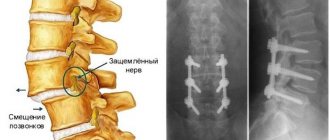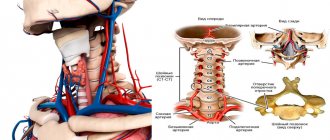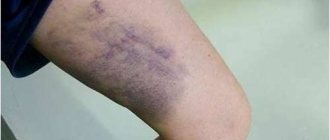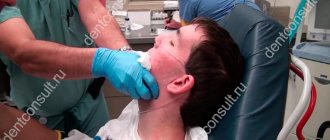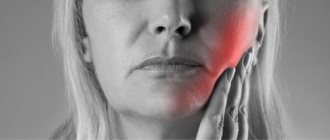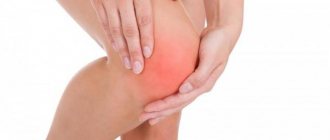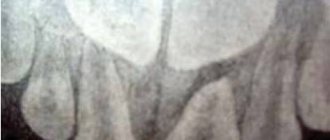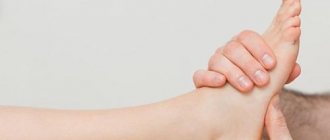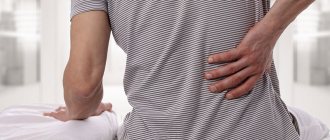Causes of dislocation
Often, displacement can occur from a sudden movement of the jaw bone itself, as well as from rough external influences. It happens that pathology develops when yawning, opening the mouth too wide, laughing, singing, screaming. In addition, dislocation of the lower jaw occurs:
- As a result of pulling out teeth, taking impressions of them;
- When performing tracheal intubation and bronchoscopy;
- When cracking nuts;
- When a patient receives a strong blow to the jaw;
- If an injury or fracture occurs from a fall on the chin;
- When the patient has an incorrect bite;
Patients with rheumatism, gout, arthritis, and epilepsy are predisposed to such anomalies. It happens that pathologies appear because the surfaces and elements of the joint unit gradually shift. The disease can be congenital. Anomalies are divided into posterior, anterior, 2-sided, unilateral, chronic, and habitual.
Classification
All jaw dislocations can be classified according to various indicators:
| According to the placement of the articular head relative to the fossa (it is indicated in which direction it came out) |
|
| By location: |
|
| By statute of limitations: |
|
| By severity: |
|
| By etiology: |
|
Any dislocation can and should be treated. Immediately after the incident, you should go to a hospital or emergency room to seek qualified medical care.
Symptoms
A slightly open oral cavity, non-closure of lips and teeth, slurred speech are typical signs of joint damage on both sides. Patients are worried about symptoms such as pain in the ear area, and the symmetry of the face may be disturbed, as the chin moves forward. Additionally, the symptoms of this type of jaw dislocation are:
- A doctor's examination shows that the masticatory muscle fibers in such patients are tense.
- They usually have thickened cheeks;
- The displacement is determined by palpation;
- When trying to close the mouth using pressure, springy movements and painful sensations appear;
The clinical picture of unilateral displacement is almost the same. The difference is that the chin is directed from the middle to the healthy side, which causes a distortion of the lower part of the face. Clicking and crunching sounds may be heard. If the head is displaced back, the patient will not be able to open his mouth. His speech and breathing are difficult. If the pathology is complicated, swelling is clearly visible, and hematomas may be present.
Hippocratic method
But in most cases, such an injury can be dealt with without anesthesia and the jaw dislocation can be quickly eliminated. Hippocrates knew how to realign a displaced joint, and many still use his method of the same name to this day. In order to do this correctly, you must strictly adhere to the instructions below:
- the thumbs should be wrapped in a soft gauze bandage or a thin towel;
- We place our hands so that our thumbs are on the victim’s chewing teeth and deep in the corners of his mouth. The remaining fingers fix the lower part of the jaw;
- having positioned the fingers correctly, we begin to slowly press on the support, with the thumbs down and, accordingly, the rest (located at the bottom of the jaw) up;
- after which we make a movement toward ourselves and upward, a characteristic click should occur, which will indicate the successful completion of the manipulations.
Treatment of lower jaw dislocation
To carry out proper treatment, the patient must be examined. In most cases, visual inspection and palpation are sufficient for this. If clarification of the diagnosis is required, the patient undergoes radiography or computed tomography. The data obtained allows the doctor to differentiate the pathology. Treatment methods:
- Reduction with anterior mixing is carried out according to the method of Hippocrates, Popescu, Khodorovich, Gershuni, Blechman.
- For chronic pathologies, surgical dentistry is used. Resection of the heads is performed, and then mechanotherapy is used.
The classic way to eliminate a bilateral anomaly: using gentle pressure from top to bottom, the doctor moves the jaw bone back. At the same time, a click is heard, the jaws close intensively. If posterior displacement occurs, the jaw should be moved forward. Treatment of the underlying disease, wearing orthopedic devices, as well as splints that limit mobility may be required. According to indications it is prescribed:
- Grinding of crowns;
- Prosthetics;
- Massage;
- Blockade of masticatory muscle fibers;
- Physiotherapy;
- Physiotherapy;
Surgical intervention in the case of habitual pathology is carried out with the aim of strengthening the ligaments, increasing the tubercle of the articular node, and deepening the cavity.
Is it worth adjusting your jaw yourself?
There are cases when the joint elements are partially in contact. In medicine, this is called subluxation of the lower jaw. In clinical practice, 2-sided anterior pathologies are more common. It is not recommended to carry out the reduction procedure yourself. First, the disease must be accurately diagnosed. After all, in reality it may not be a displacement, but a fracture, the treatment of which is different. A person with medical skills can try to replace the jawbone, but this is not an easy task. Therefore, it is better not to take risks, but to urgently consult a doctor to avoid complications.
At home, you can provide first aid to the victim:
- The patient should not talk.
- It is necessary to limit the movement of the jaw bone.
- A fixative bandage should be applied.
- If possible, the victim can take a pain reliever.
Structure
The formation of the mandibular region is the result of the evolution of the human body. In the process of development, the entire structure became mobile and autonomous, gaining the ability to move freely and perform the basic functions necessary for a person. The temporal joint is localized in the fossa, connecting to the bony part.
When a subluxation occurs, the head of the joint partially comes out of the fossa, succumbing to the influence of external factors. As a rule, this phenomenon becomes a consequence of a general weakening of the ligaments or disturbances in the articular cavity. If you have the proper skills and practical experience, you can restore the original position of the jaw yourself, but the systematic occurrence of such a problem is the basis for complex treatment.
Prognosis and prevention
To prevent jaw subluxation, fracture or displacement, the amplitude of mouth opening should be controlled. This must be monitored when brushing the mouth, eating, screaming and singing. It is important to promptly eliminate risk factors and prevent injury.
When pathology has arisen, it must be promptly eliminated in the acute period. Compliance with the timing of therapy ensures a favorable outcome of the disease. In such a situation, relapses practically do not occur. If the patient has concomitant diseases, habitual displacements may recur. Loading the affected jaw bone too early often causes difficult joint mobility. Therefore, the patient must strictly follow all the doctor’s recommendations. Complete rehabilitation is the key to the effectiveness of treatment and the prevention of complications.
First aid
Before visiting a doctor, the patient must be given first aid. All measures in this case will be aimed at minimizing the load on the joint and reducing the intensity of pain symptoms.
First of all, the affected joint is immobilized with a bandage or scarf. The jaw is fixed from top to bottom and from front to back using two flaps of fabric. At this time, the patient is prohibited from speaking and opening his mouth wide.
Options for fixing the jaw using a bandage
If a person has dislocated his jaw, his mouth will be slightly open. To prevent dirt and dust from getting into the cavity, cover it with a damp cloth. This will also reduce saliva production. For severe pain, a non-steroidal solution can be administered intramuscularly. An ice container is placed at the site of the suspected injury to reduce the severity of swelling. This event will also reduce the intensity of pain.
[node:field_similarlink]
Which doctor should I go to if I have a problem? Jaw injuries require consultation with a surgeon. After examining the patient, the doctor decides whether to realign the joint or perform surgery. Jaw subluxations often occur in the dentist’s office, when the patient opens his mouth wide during manipulation. In this case, the specialist provides the person with qualified assistance on the spot.
If bone damage occurs at night, an ambulance is called for the person. The victim is taken to a 24-hour emergency room, where the necessary manipulations are performed. Before determining a treatment regimen, the doctor orders an x-ray to analyze the characteristics of the injury.
Comments
My brother somehow had a dislocated jaw. He said it hurt terribly! But can there be relapses?
Andrey (12/28/2020 at 01:29 pm) Reply to comment
- Dear Andrey! A relapse, and more than one, is possible if a person suffers from joint diseases and other pathologies (for example, malocclusion), which constantly lead to overload and improper functioning of the temporomandibular joint. And, of course, a new dislocation is possible if you neglect the rules of personal safety, if you get into an accident or other traumatic situations.
Editorial staff of the portal UltraSmile.ru (12/30/2020 at 09:12) Reply to comment
I constantly feel that my jaw seems to be overstrained; sometimes there are clicks on one side. I contacted a therapist. The doctor did not take an x-ray, but felt and determined a slight inflammation. He only prescribed ibuprofen, and said everything else would go away on its own. But I don’t understand how the medicine will help relieve tension in the jaw?
Katya (16.01.2021 at 14:22) Reply to comment
- Ibuprofen will relieve the inflammatory process, but the tension in the jaw will remain, as it is most likely associated with TMNS dysfunction. You may need to undergo a dental examination by an orthodontist and orthopedist. The problem may be associated with bite pathologies, incorrectly installed orthopedic structures, or the need for their installation.
Editorial staff of the portal UltraSmile.ru (01/19/2021 at 09:24) Reply to comment
Write your comment Cancel reply
Independent actions
When a jaw is dislocated, a person should not make sudden movements. Severe pain is relieved with analgesics. In this case, the victim must know for sure that there is no allergy to the medication. Trauma is often accompanied by increased blood pressure. If the indicator increases significantly, you should take a drug that normalizes blood pressure.
Independent actions when realigning the jaw:
- Fixation of the jaw in one position using available means or a splint.
- Place a bandage in the mouth that will absorb the saliva that is produced.
- Call an ambulance. If the victim cannot speak, then he needs to ask neighbors or passersby for help (if the dislocation occurred on the street). If there is a clinic near the scene of the incident, you should go there immediately.
Before receiving qualified medical assistance, you should say as little as possible, since any movements can cause pain or complications of the dislocation. It is not advisable to adjust the joint yourself. Illiterate actions can lead to damage to the helping fingers or long-term dysfunction of the jaw apparatus in the victim.
